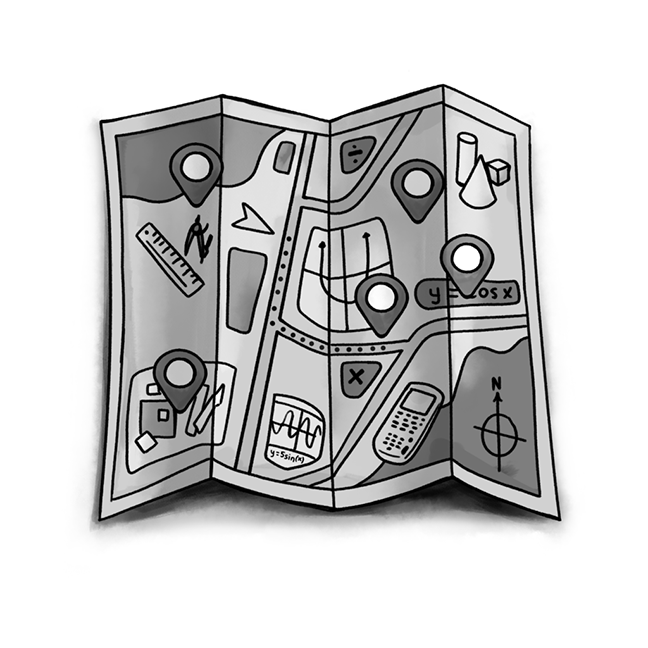The ABP provided me with many new ideas as well as a greater confidence in delivering the curriculum, and an ever-stronger commitment to the CPM program.
Why did 32 veteran CPM teachers gather last August in Seattle to learn more about a curriculum they already use? It turns out that the CPM courses are very interesting characters! The group included teachers from school districts across the country, each with five or more years of CPM teaching experience,who were ready to take CPM to the next level. The teachers spent a powerful week at Seattle Pacific University with time for reflection, productive struggle, and taking a deeper dive into the inner workings of a CPM classroom. One important theme throughout the week was the idea of a “mathematical story.”
Just as a literary story can be a short story, a long novel, or a multiple-volume epic tale, the notion of mathematical story also can operate at different grain sizes. …. The notion of mathematical story pays attention to the mathematical ideas in focus at each point of the sequence to understand how the content unfolds.
– Managing editor Leslie Dietiker, taken from the article “Shaping Mathematics into Compelling Stories: A Curriculum Design Heuristic”
Similar to a book study group, these veteran teachers analyzed the storylines in the curriculum. They learned that when lessons are modified (something we have all done!) it can interrupt the storyline and have unintended consequences on student learning. Two participants summarized their learning this way:
“I have always told my students that there are things that we use throughout the school year, but never put two and two together that there was an overall story that went with the book. Now I am able to see the chapters as short stories that connect to an overall story. How magnificent that I will be able to point this out to my students and help increase their mathematical connections.”
“I have taken a greater look at the threads, making myself more aware of how each problem fits in the mosaic.”
Throughout the week participants examined topics related to storyline, including equity, cognitive demand, learners who sometimes struggle, collaborative study teams, and team roles. These experiences were carefully sequenced to model the storyline concept and to help teachers answer the essential question “How do my actions as a teacher influence learning for all students?” Time for processing after each activity allowed teachers to reflect both individually and with peers. The opportunity to reflect was powerful, and something that teachers do not always have time for during a busy school year. One participant wrote:
“The essential question will resonate long after the Academy. After fully processing in the upcoming weeks I plan to not only use what I heard but will passionately be an agent for change and sharing. Too good to keep to yourself.”
In addition to reflecting on pedagogy, participants also experienced productive struggle by wrestling through a problem solving session known as Tom’s Problem and then discussing the role of teams in the process. Throughout the week, teachers re-examined the importance of teams and left committed to making them a part of their collaborative classroom this year. One participant described the impact of the Academy on her classroom in this way:
“I have found the ABP to be a great experience for my teaching. As of right now, my kids are still in groups! We are on week five of school and this is the longest I have gone with kids still in groups. Many of the rituals and routines we went over in the Academy I have implemented, or adapted, to my classroom needs. I use the videos in the online teacher edition daily, go over the team roles with my classes on a consistent basis, use the checklist that was mentioned by a peer, and have learned to ‘go slow to go fast.’ It has been an interesting start to the school year and I am happy to say that my school also has a CPM coach of which we get to take advantage! I am excited to see what the rest of the year will bring.”
The Academy of Best Practices for Veteran CPM Teachers is an important vehicle for helping teachers re-ignite their passion for CPM and for best practices. If you are a CPM teacher who has been using the curriculum for more than five years, consider applying to attend the Academy of Best Practices for Veteran Teachers 2.0 in the summer of 2018. You and your students will be glad you did! Space is limited and selection is not guaranteed. Plan ahead! Applications are comprehensive and will open in the new year.
